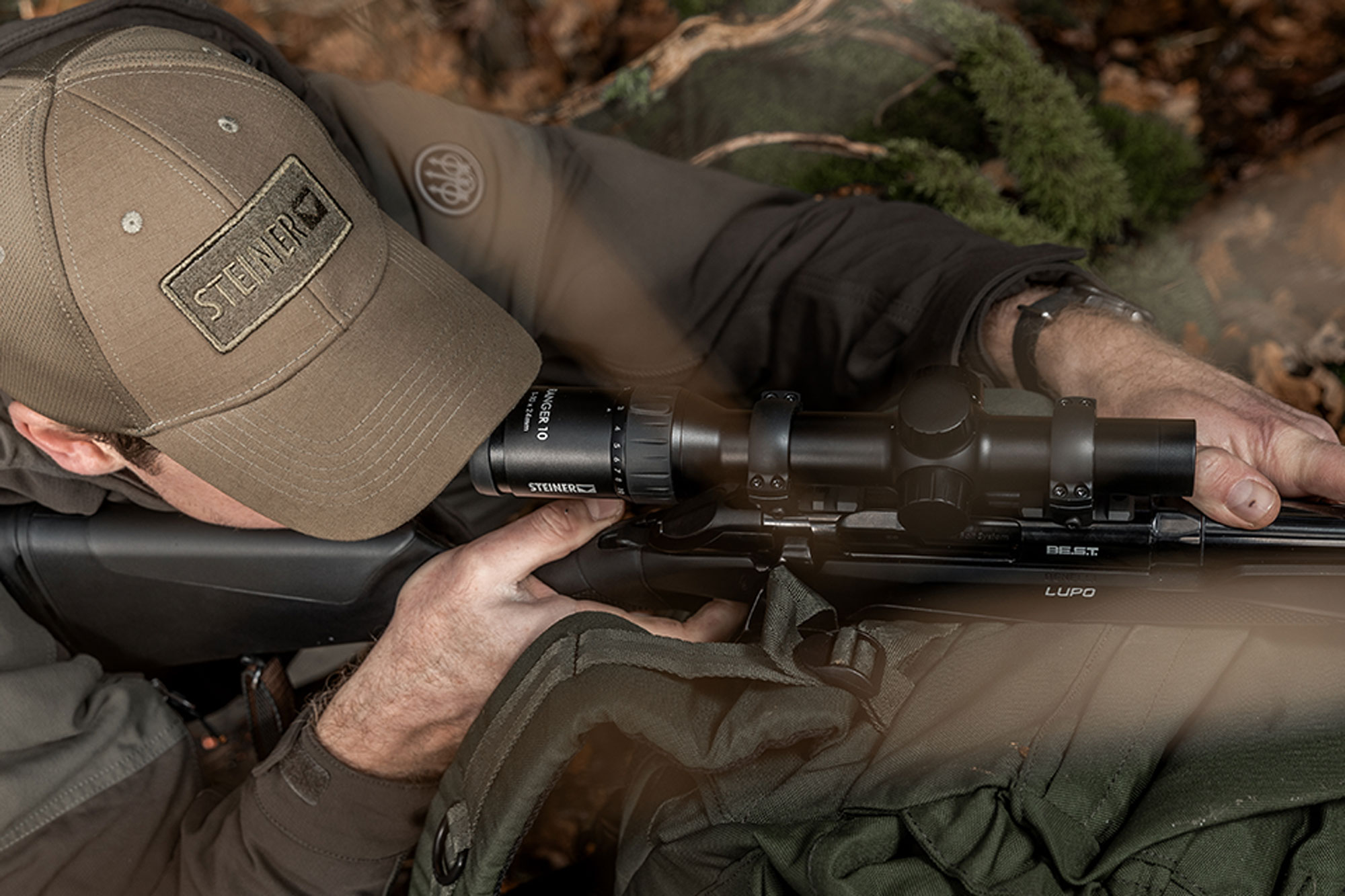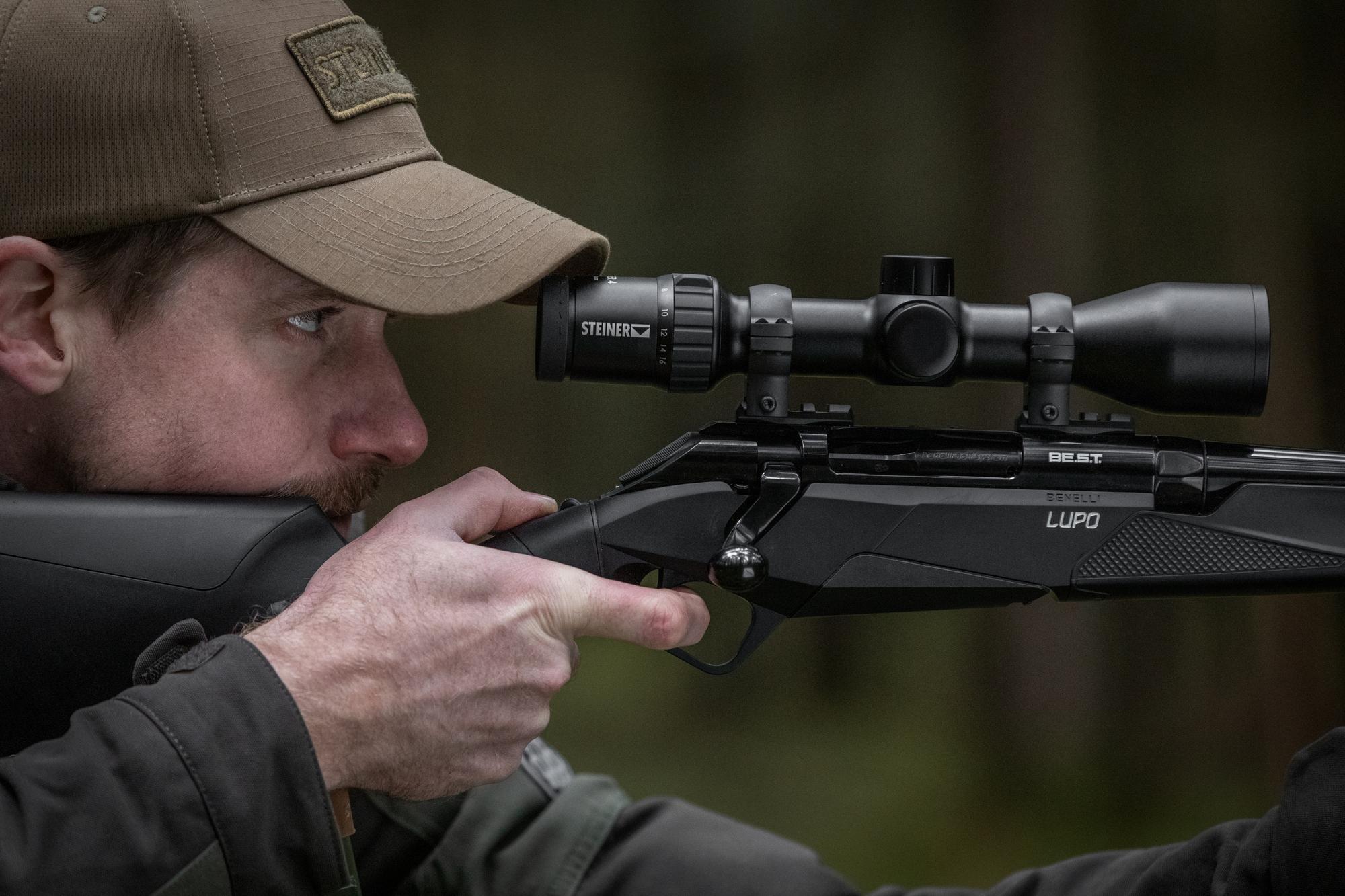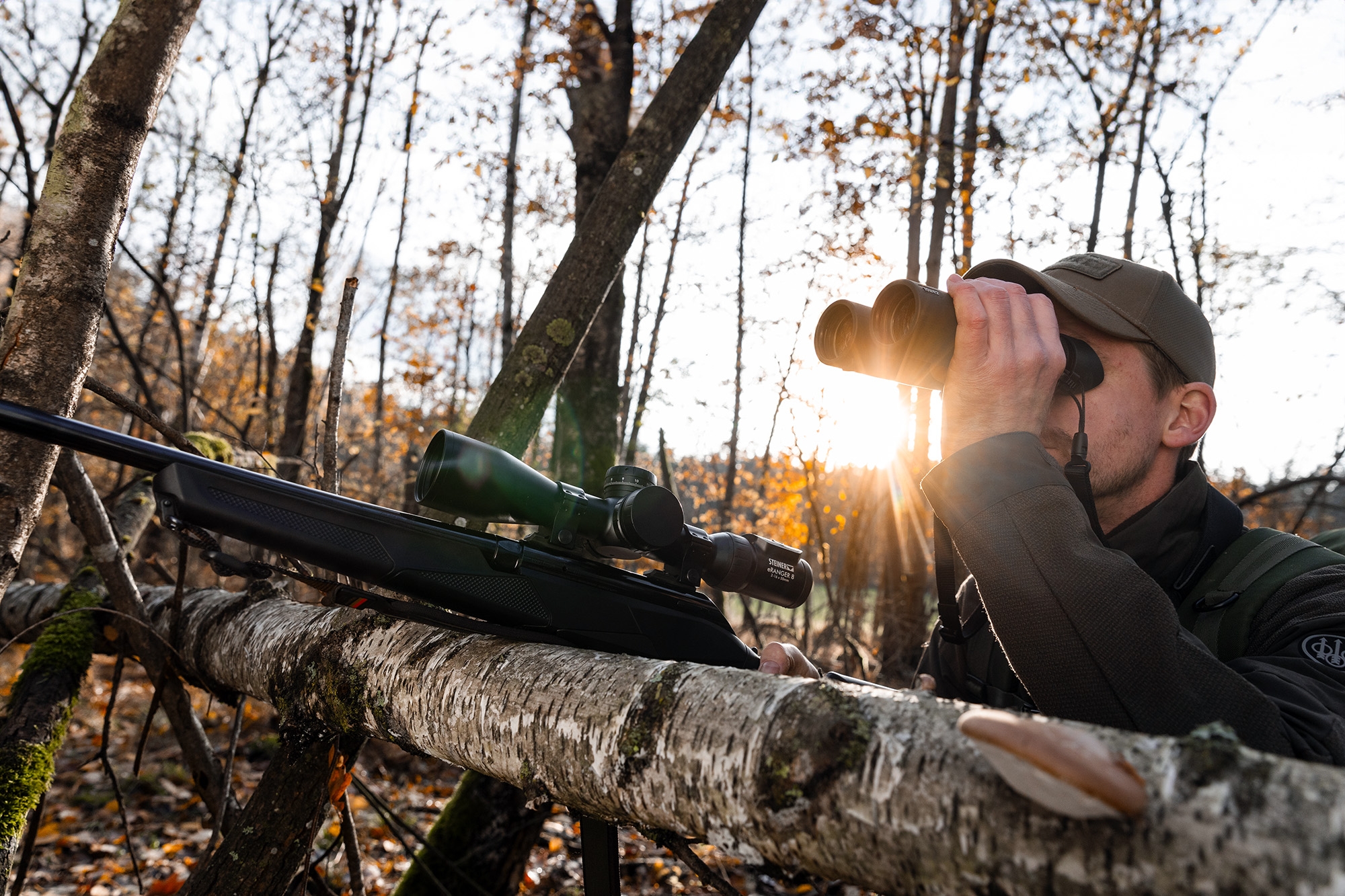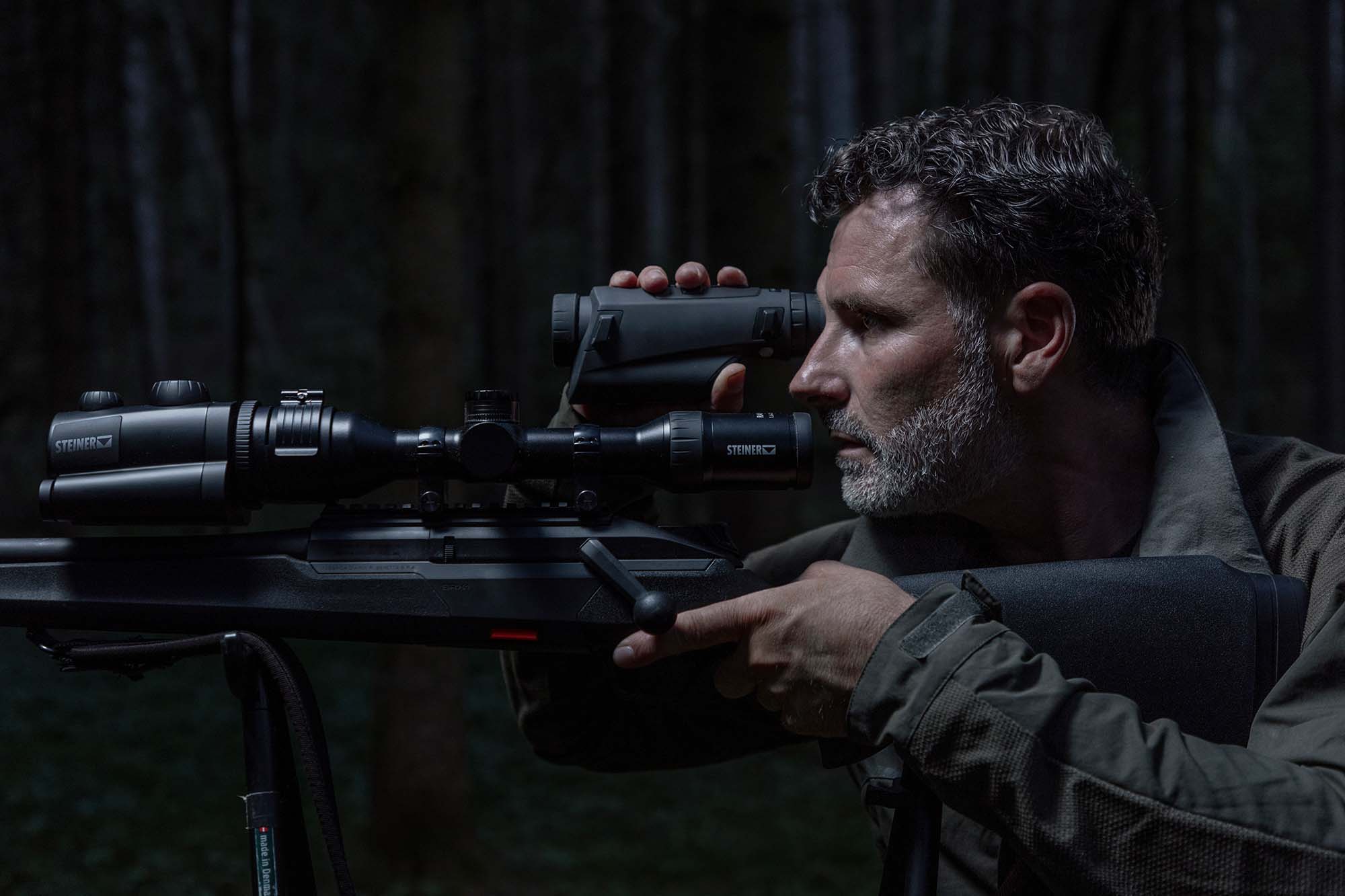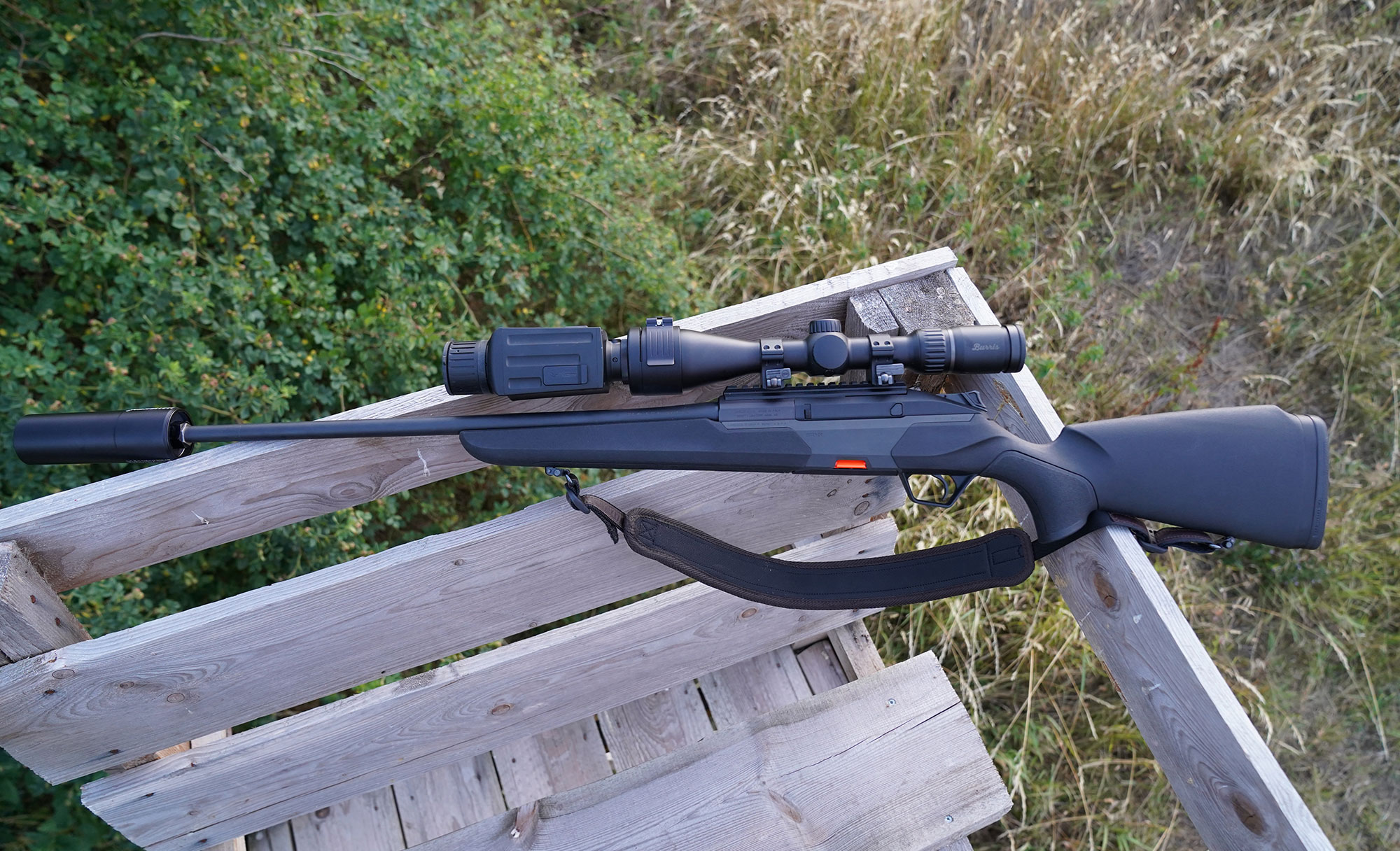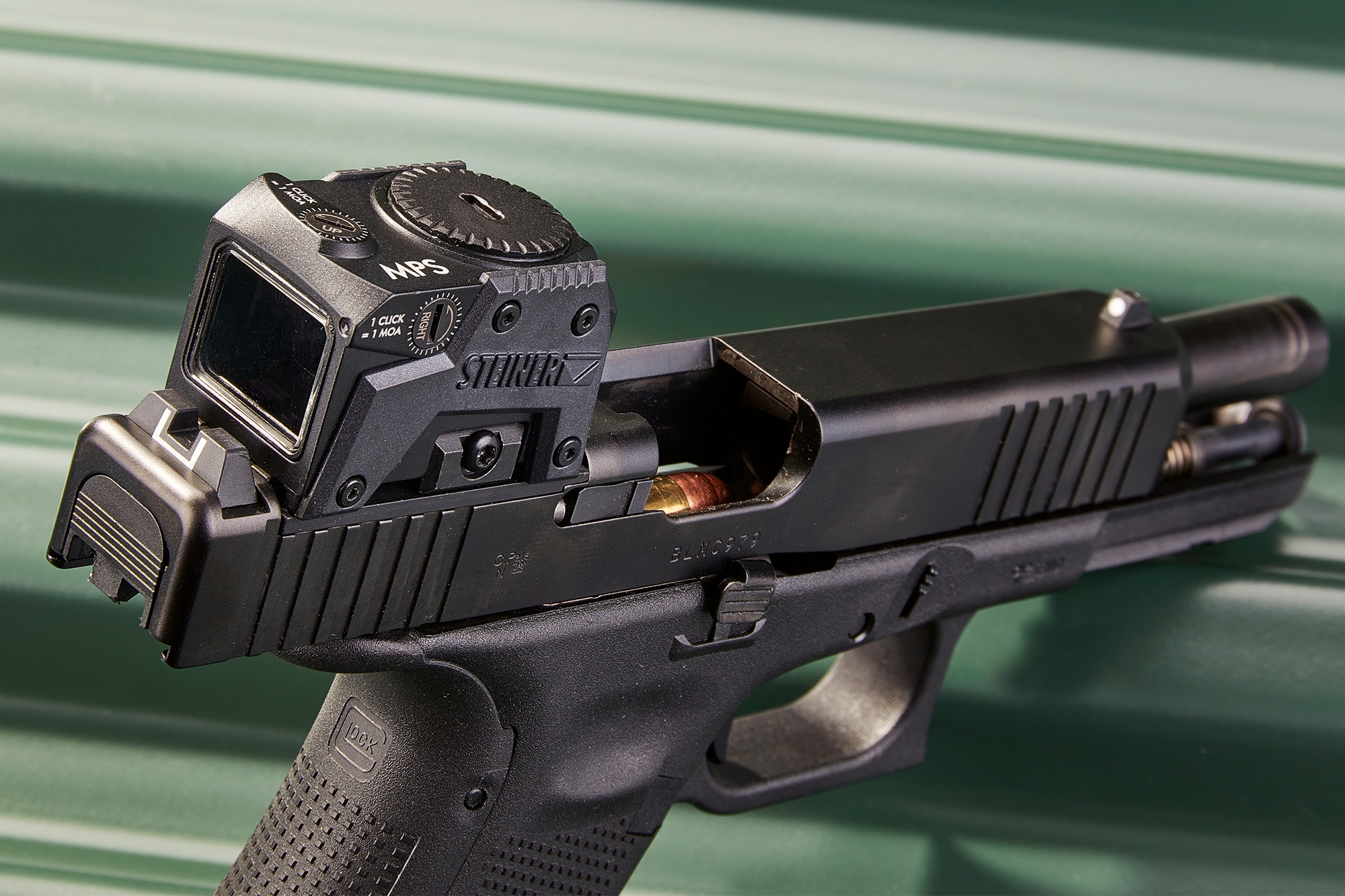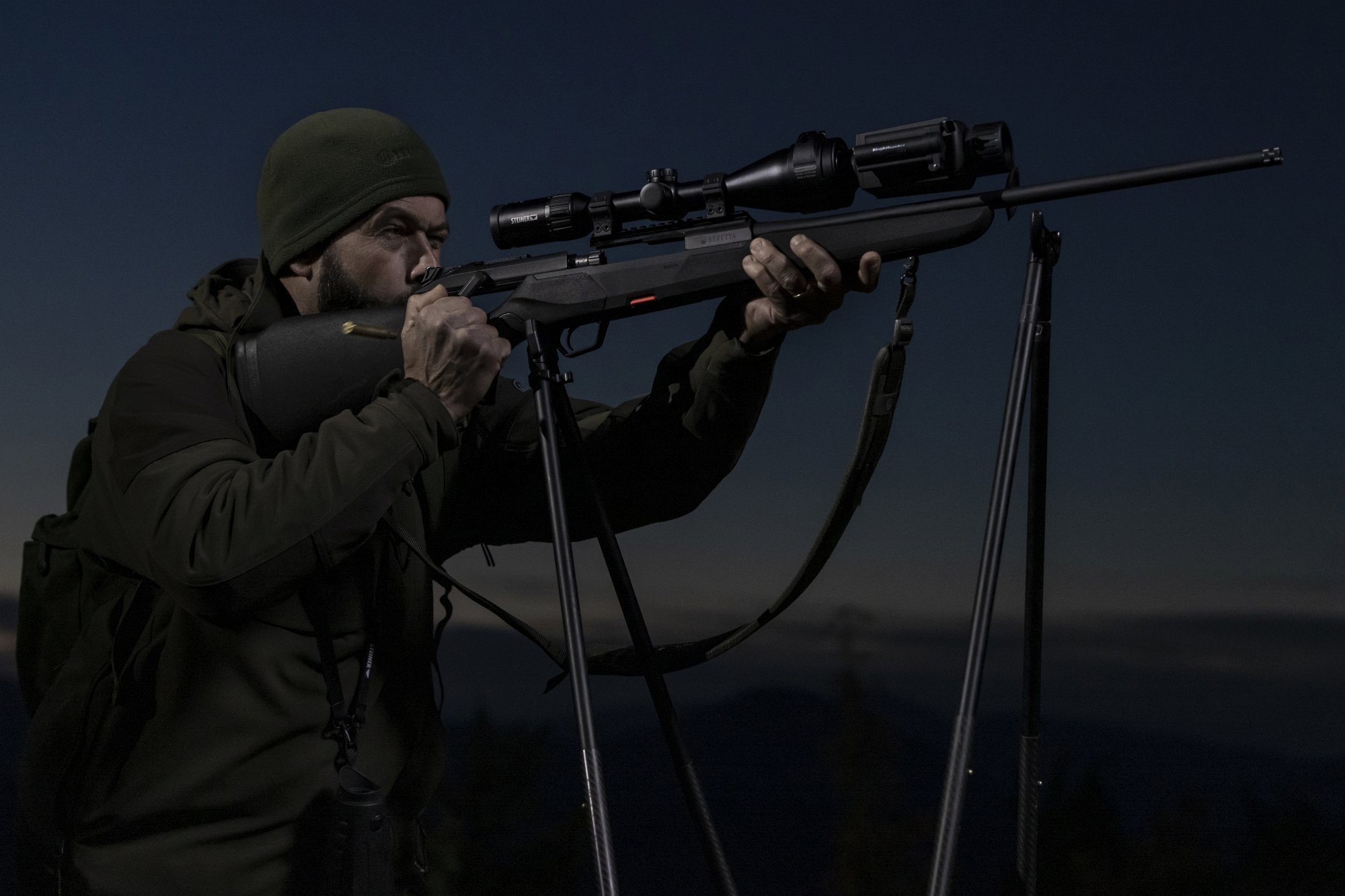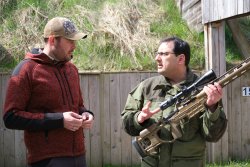
First things first: on the shooting range, Steiner's new riflescopes with eightfold zoom made a very good first impression right away. We were able to shoot with the new optics at 100, 200 and 300 meters, depending on the distance sometimes prone, supported or even freehand, on moving targets at 25 and 100 meters.
In terms of price, the new Ranger 8 models from Steiner with 8x zoom clearly move in the direction of the premium segment. On site, we were able to try out the compact Steiner 1-8x24 with the Beretta BRX-1 straight-pull rifle and test its larger Ranger siblings on rifles such as the new Sako S20 or the Benelli Lupo bolt-action repeater. We were even able to shoot at 300 yards with a purebred sniper rifle like the Sako TRG M10. And yes, it's great fun, even if the M10 model is intended more for military and law enforcement special forces. But at this distance, the enormous performance of the new optics is particularly impressive.
The complete range of hunting scopes from Steiner
Until now, the optics specialist from the Beretta Group offered hunters a choice of two riflescope series: Ranger 4 and Ranger 6. In keeping with the Ranger 8 series now being introduced, here too the number after the name stands for the zoom factor. The Ranger 4 series is the entry-level series and thus also the most affordable. It includes a total of seven models, with 1-4x24, 2.5-10x50, 3-12x56, 4-16x56 and 6-24x56 magnification ranges available. Whereby the hunter can get the "classic" glasses 1-4 and 3-12 also in each case with rail.
The Ranger 6 has also been on the market for some time now and, with the current appearance of the 8 series, represents the (upper) middle class in the Steiner catalog. Four models are offered in two magnification ranges: 1-6x24 and 3-18x56. The latter is also available with the S3-I instead of the standard 4A-I reticle (also on the Ranger 8), as well as with the standard reticle with ballistic turrets (see below).
The new hunting riflescopes from Steiner: the Ranger 8 series
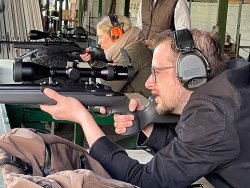
The six models in the Ranger 8 series are now new to the range. "Wait a minute," some readers will now ask, there are only four Ranger 8s listed below in the technical specs. That's right, two Rangers are missing from the data for reasons of clarity. These are the two 2-16x50 "BT" and 3-24x56 BT variants. They are available as an alternative (at extra cost) to the two almost identical Ranger 8s in the same magnification range. The abbreviation BT stands for "Ballistic Turret": behind it is an extra in the form of a reticle quick adjustment for distances from one to four hundred meters in 100-meter increments. The ballistic turrets were already well received by the hunting community with the aforementioned Ranger 6 series, and in combination with the eightfold zoom factor of the new Ranger 8, additional options are available here for long-distance shots. Despite high magnifications and quick elevation adjustment.
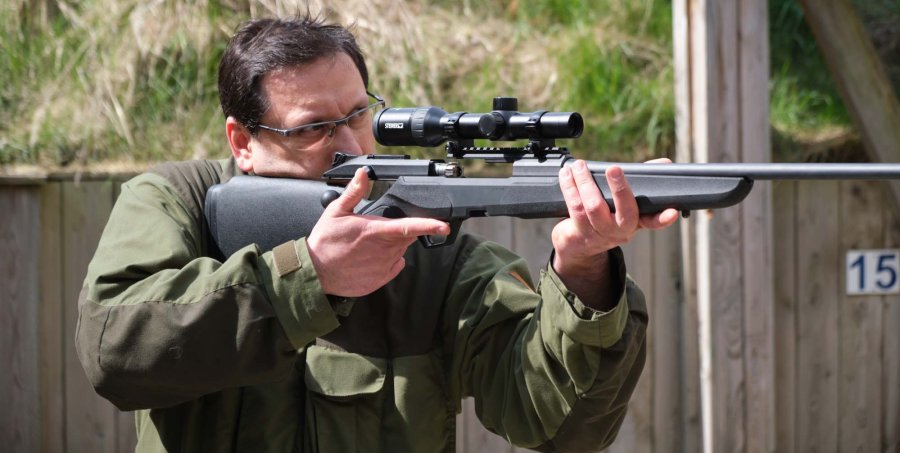
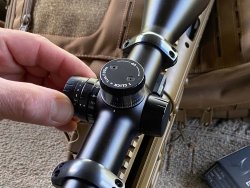
The fact that Steiner is clearly targeting the hunting optics market with this series can be seen in the reticle. There is no trace of "Christmas trees", additional compensating or estimation marks. Without exception, all Ranger 8s come with a 4A-I reticle in the second image plane, a tidy and absolutely typical reticle for European hunters without any frippery. The "I" stands for the 2-MOA illuminated dot. Here, one relies on a fiber optic insert, with six brightness levels for the night and five for the day's hunting work. The illuminated fiber optic dot is fully daylight capable even in bright light conditions, offers an on/off setting between all brightness levels and an automatic shutoff after six hours. It's optional at extra cost on the two Steiner optics already mentioned, and the ballistic turret is always on board for the mighty 4-32x56 Long Range hunting model. The new driven hunt specialist 1-8x24 is different; the latter comes without a ballistic turret. Even with parallax compensation, the driven hunt riflescope with its fixed distance of 100 meters stands out from the crowd. All other Ranger 8s offer adjustable parallax compensation. And yes, you can adjust it down to 20 meters on the new series – which works well with thermal imaging attachments. Steiner also has an interesting offering in this segment with the Nighthunter TI35.
Tough stuff for the Ranger 8: Steiner offers hunters the ruggedness they are used to from the military sector
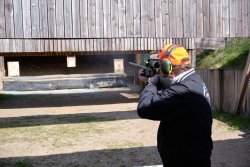
Where else did Steiner's developers lend a hand when they laid the keel for the new Ranger 8 series? In the anodizing, for example. The robust aluminum housings are protected by a new anodization that meets military standards. Rugged optics are a core issue for Steiner anyway. The new hunting scopes can withstand accelerations of up to 500 G, and Steiner is currently very successful in the military and law enforcement sectors as well. For example, the German manufacturer from the Beretta Group won the optics tenders for the German Army's G29, the Finnish "Tarkkuuskivääri 23" (sniper rifle 23) and the new Victrix Scorpio of the Italian armed forces. Accordingly, the riflescopes should have no problem withstanding high-recoil cartridges in rough use.
As for handling in practice, eye relief is a generous (and eyebrow-friendly) 95 mm. The manufacturer describes the optical qualities as "high contrast". That could mean anything, of course, but in terms of transmission, Steiner named over 90 percent light transmission for the Ranger 8 under daylight conditions. A fine value and definitely a feature of high-quality riflescopes, but the prices then also start at 1,799 euros. By way of comparison, the Ranger 6 series with a 6X zoom starts at a list price of 1,499 euros for the most affordable variant. The first impression of image quality and sharpness was excellent. We are already looking forward to the first test models.
Steiner Ranger 8 overview: all models, technical specs + prices
| Model: | 1-8x24 | 2-16x50 1 | 3-24x56 1 | 4-32x56 BT |
| Price: | 1,799 euro | 1,849 euro | 1,899 euro | 2,099 euro |
| Objective Lens: | 24 mm | 50 mm | 56 mm | 56 mm |
| Length: | 290 mm | 345 m | 375 mm | 385 mm |
| Main Tube: | 30 mm | 30 mm | 30 mm | 30 mm |
| Reticle: | 4A-I, 2nd image plane | 4A-I, 2nd image plane | 4A-I, 2nd image plane | 4A-I, 2nd image plane |
| Click Adjustment: | 1 cm/100 m | 1 cm/100 m | 1 cm/100 m | 1 cm/100 m |
| Elevation Adjustment Range: | +/- 200 cm/100 m | +/- 160 cm/100 m | +/- 115 cm/100 m | +/- 95 cm/100 m |
| Windage Adjustment Range: | +/- 200 cm/100 m | +/- 160 cm/100 m | +/- 115 cm/100 m | +/- 95 cm/100 m |
| Parallax: | 100 m | 20 m – infinity | 20 m – infinity | 20 m – infinity |
| Field of View at 100 m: | 37.8 m - 4.73 m | 19.92 m - 2.37 m | 12.6 m - 1.6 m | 9.46 m - 1.18 m |
| Weight: | 510 g | 660 g | 730 g | 774 g |
| Notes: | 1Steiner also offers this model with an optional
ballistic turret for an additional charge of just under 150 euros. Same for all models: 95 mm eye relief, -3/+2 diopter adjustment range, 1 m pressure waterproof, functional temperature range -25 to +63 °C. | |||
Also new from Steiner: LRF 42 binoculars with laser rangefinder
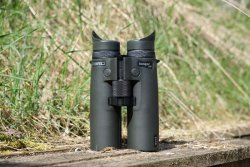
Parallel to the presentation of the new Ranger 8 series, Steiner also introduced new binoculars with integrated rangefinder. These are the most important characteristics of the 1,499 euro Steiner Rangefinder LRF 42: roof prism, central focusing, single eyepiece focusing, OLED display, various scan modes, protractor.
Unfortunately, time and opportunities at the Steiner event were not sufficient for more than a first and second look at and through the new rangefinder – the editorial team would have liked to have an LRF 42 for an extensive field test. According to the manufacturer, the device is also suitable for range measurements in extreme weather conditions. But there were no such conditions at the presentation, the weather was simply too good. This much should be briefly noted about the first impression in bright light and clear weather conditions: nice grip and not too heavy for a pair of 42 universal binoculars, color fidelity okay, image sharpness good up to the edges, OLED display easy to read and the device measures quickly. But there are still all the additional functions to check in peace and a rangefinder must prove itself under various conditions: long distances, different lighting conditions, different sized and differently reflective targets, (sometimes partially obscured in advance), drizzle, ground fog – all this takes time.
Conclusion on the product premiere and our first impression of the hunting Steiner Ranger 8 scopes
The 8X magnification factor delivers additional flexibility on the hunt with otherwise nearly the same dimensions and weight. During their first use on the stand, the new Ranger 8s appeared sharp at the edges, rich in contrast and equipped for practical use. However, the wheat and the chaff in hunting optics are separated by their use in the field – against the light, at dusk, in moonlight. That's why we'll soon be sending a test sample to the editorial office so that we can take one of the new Ranger 8s out into the field.
Text: Hamza Malalla and Dario Nothnick
More information on the new Ranger 8 and the other optics can be found on the Steiner website.


